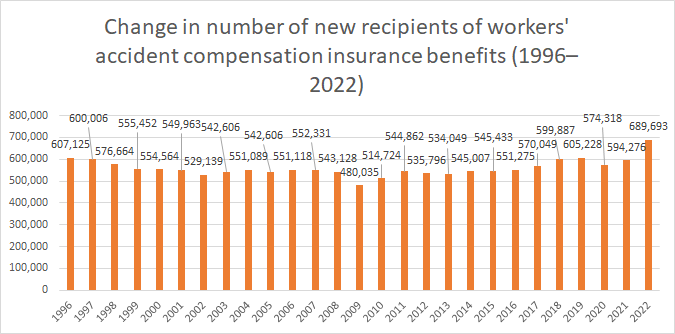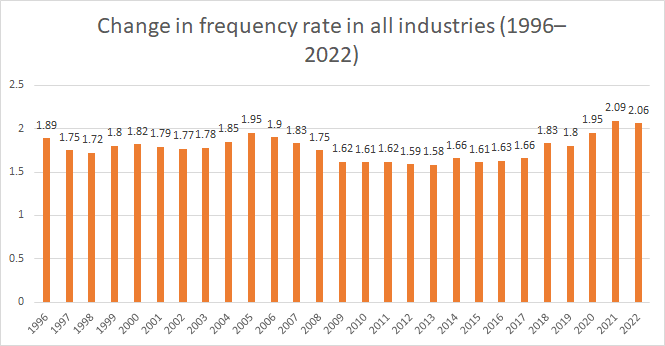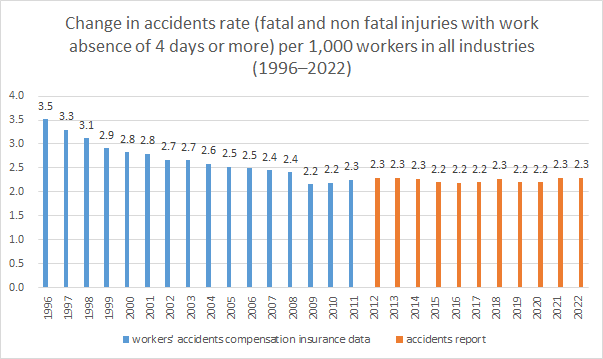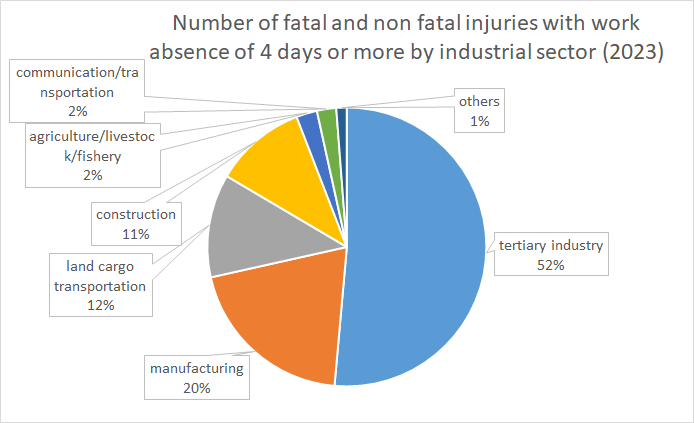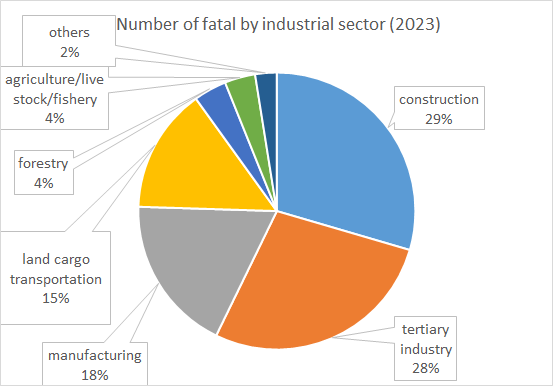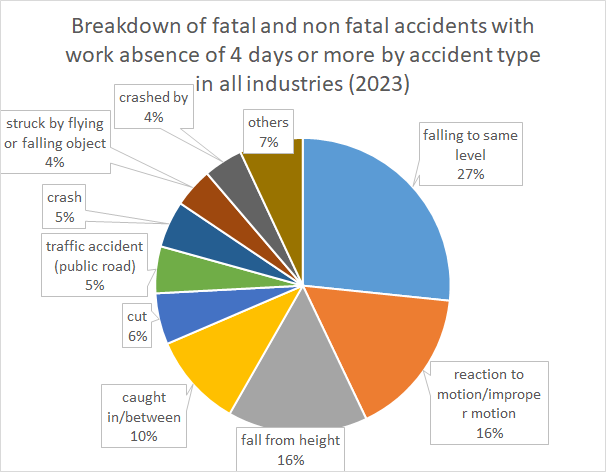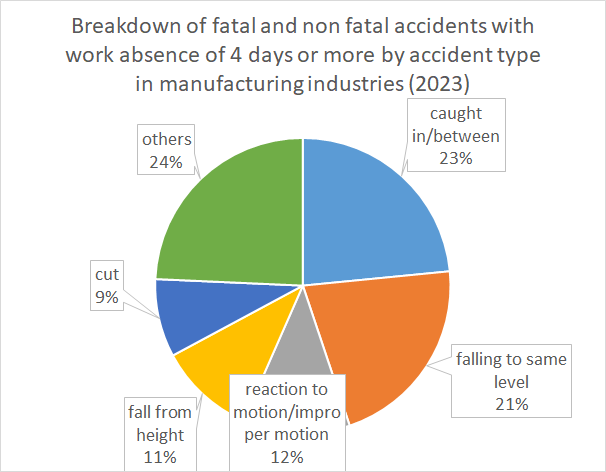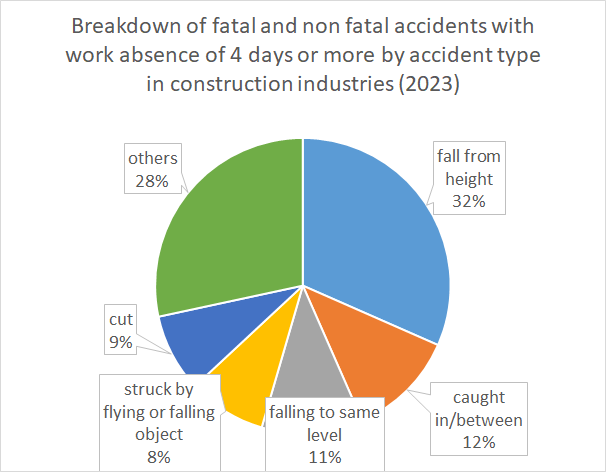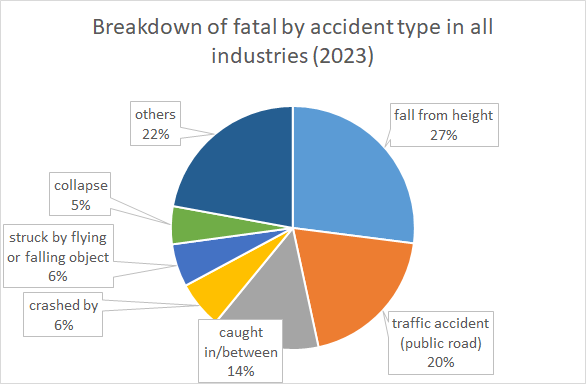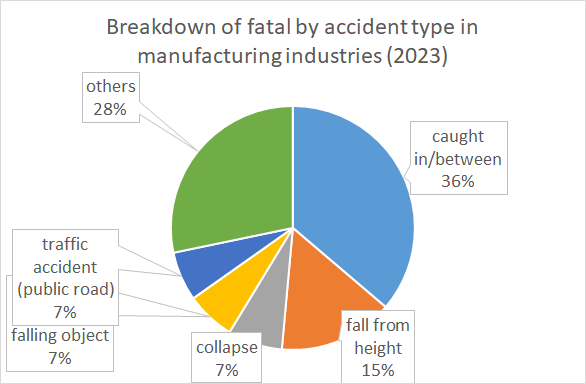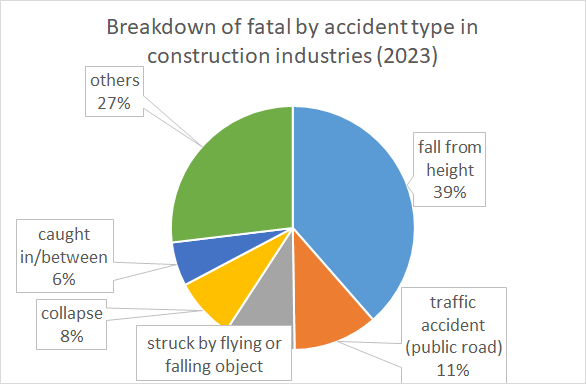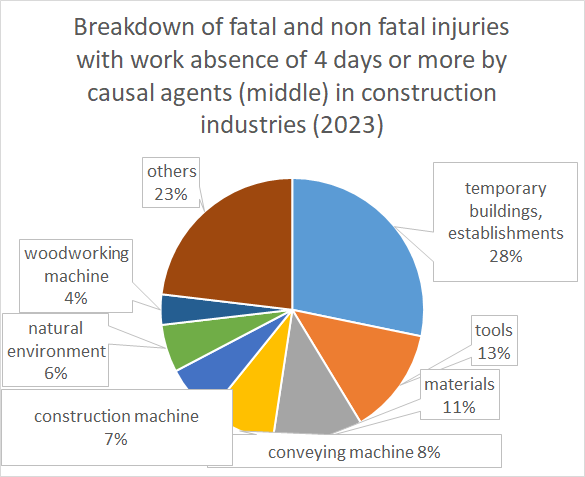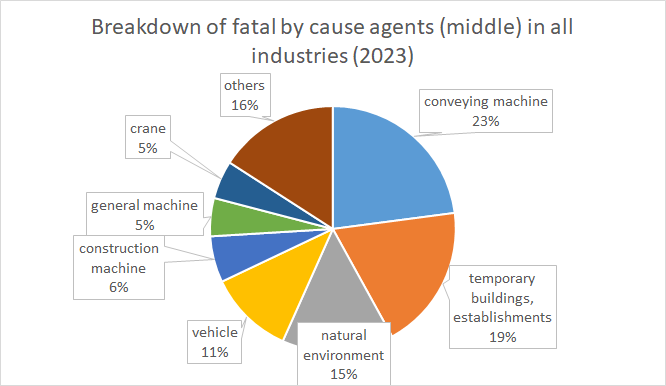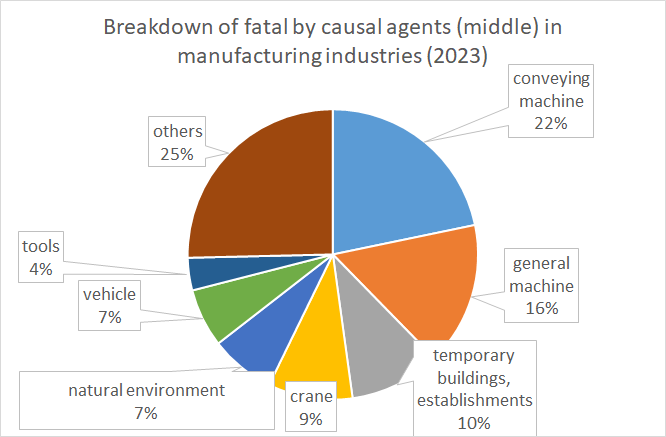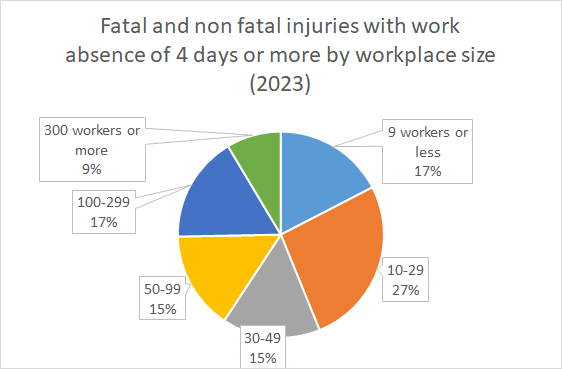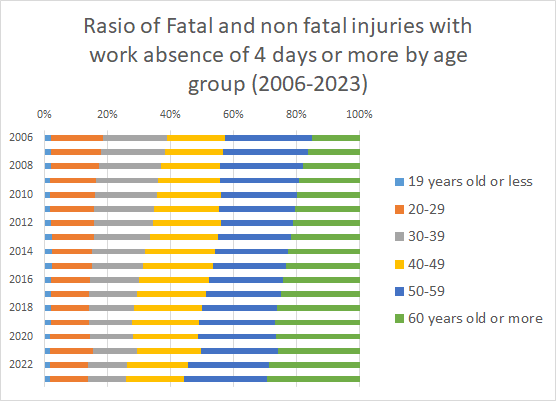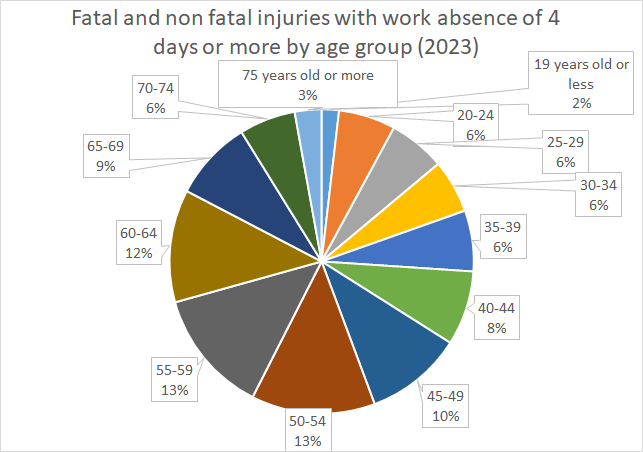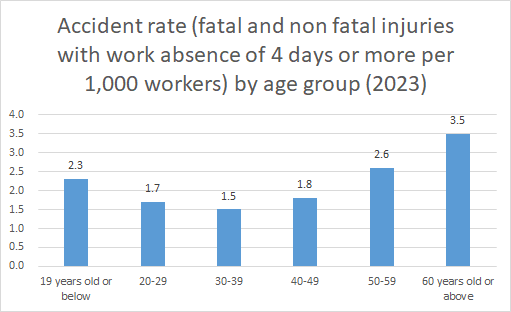![]()
![]()
![]()
The information collected by the  JICOSH
JICOSH  ,
the former international center of JISHA, is available here, though it has not been updated:
,
the former international center of JISHA, is available here, though it has not been updated:
 Industrial Accidents Statistics in Japan (2022)
Industrial Accidents Statistics in Japan (2022) 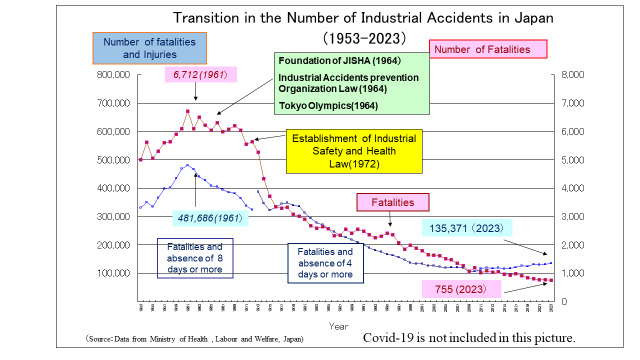
 Survey by the Safety Division, Ministry of Health, Labour and Welfare (MHLW)
Survey by the Safety Division, Ministry of Health, Labour and Welfare (MHLW)
 https://www.jisha.or.jp/english/statistics/index.html
https://www.jisha.or.jp/english/statistics/index.html
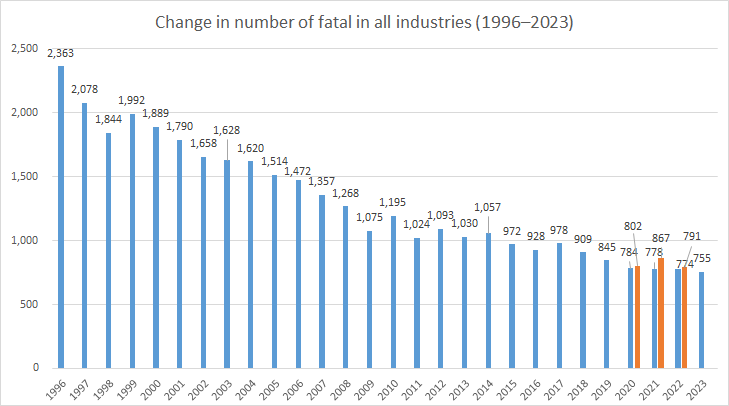
Orange lines in 2020-2022 include Covid-19 cases.
Blue lines in 2020-2023 do not include Covid-19 cases.
 Survey by the Safety Division, Ministry of Health, Labour and Welfare (MHLW)
Survey by the Safety Division, Ministry of Health, Labour and Welfare (MHLW) https://www.jisha.or.jp/english/statistics/index.html
https://www.jisha.or.jp/english/statistics/index.html
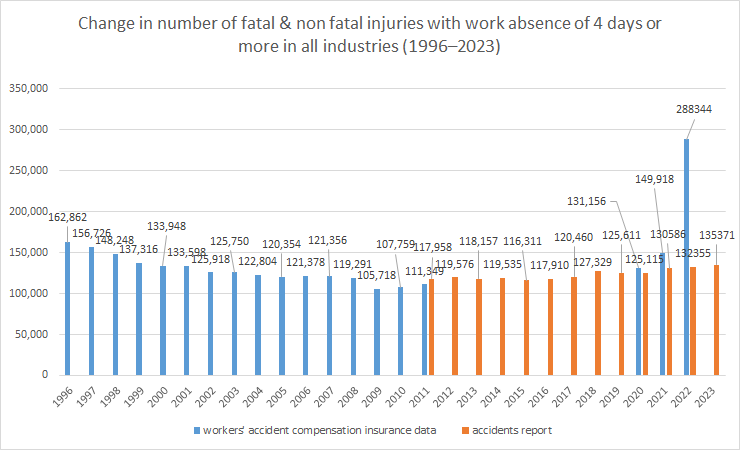
Blue lines in 2020-2022 include Covid-19 cases.
Orange lines in 2020-2023 do not include Covid-19 cases.
